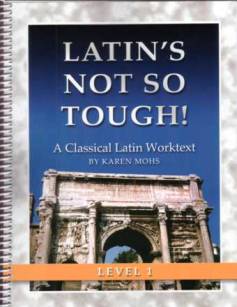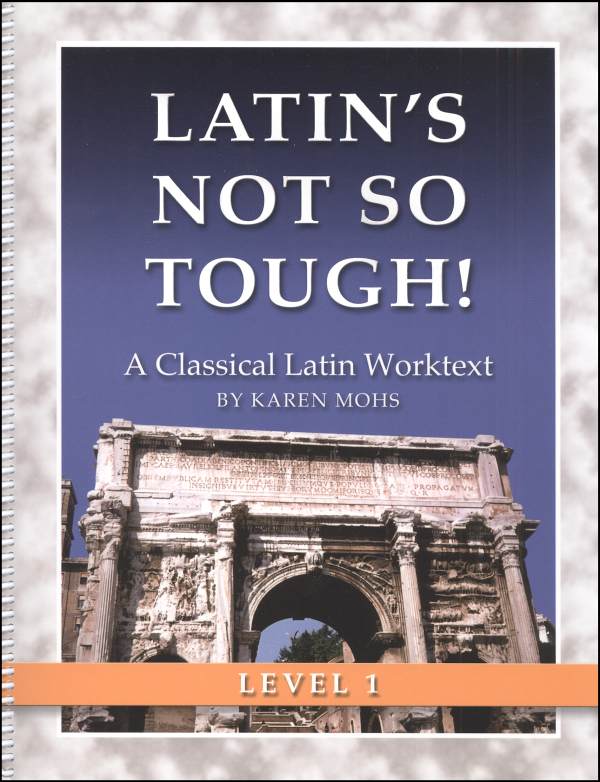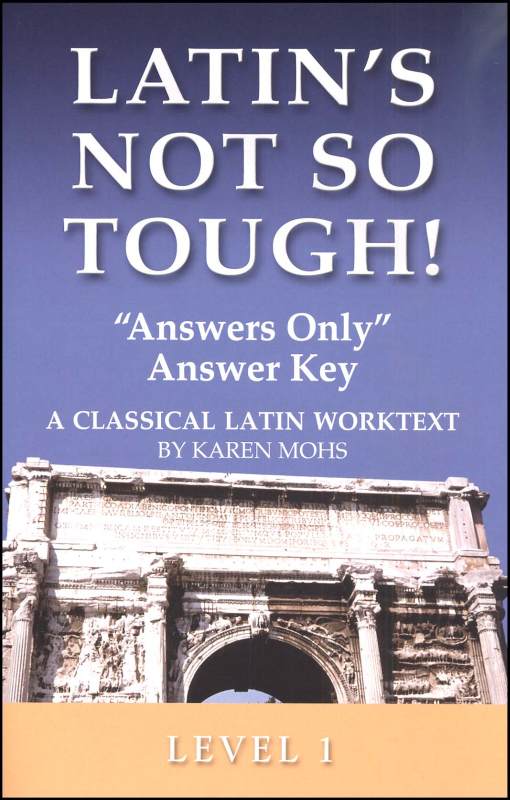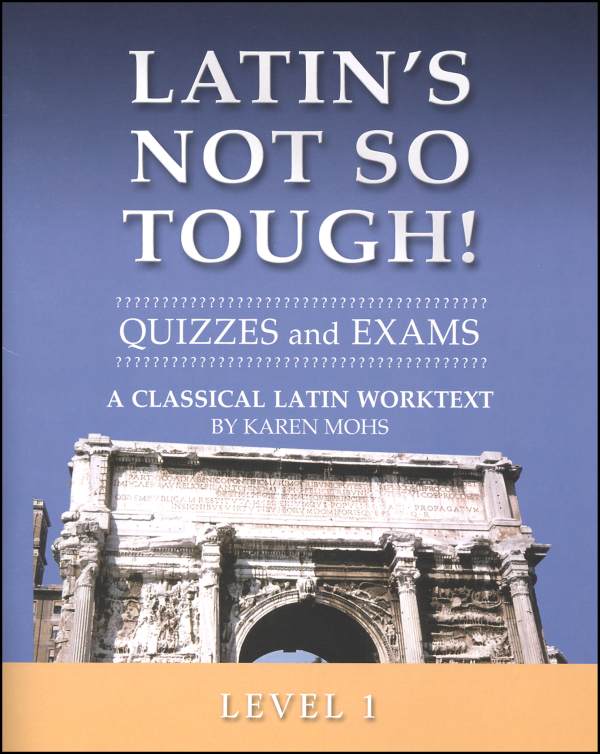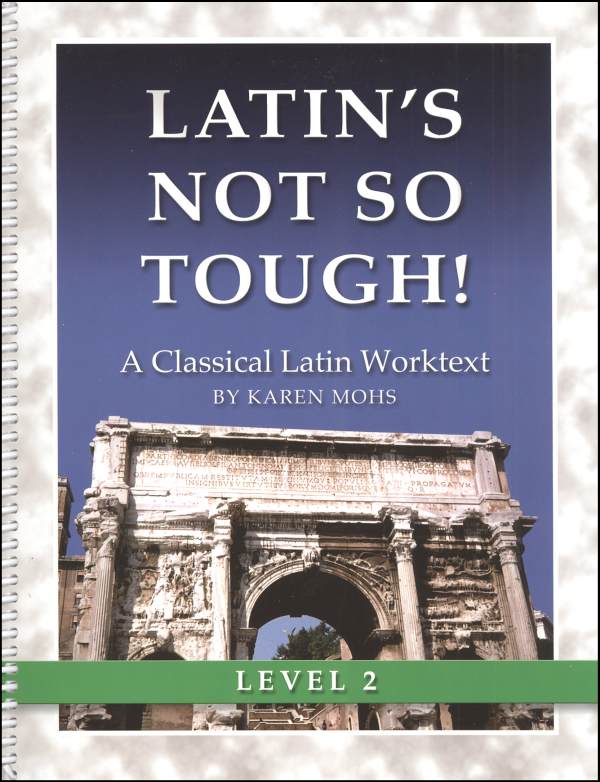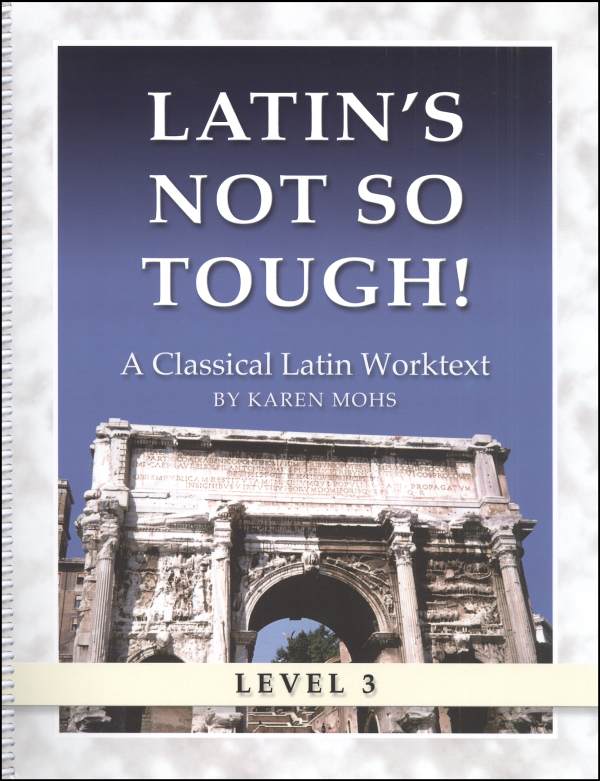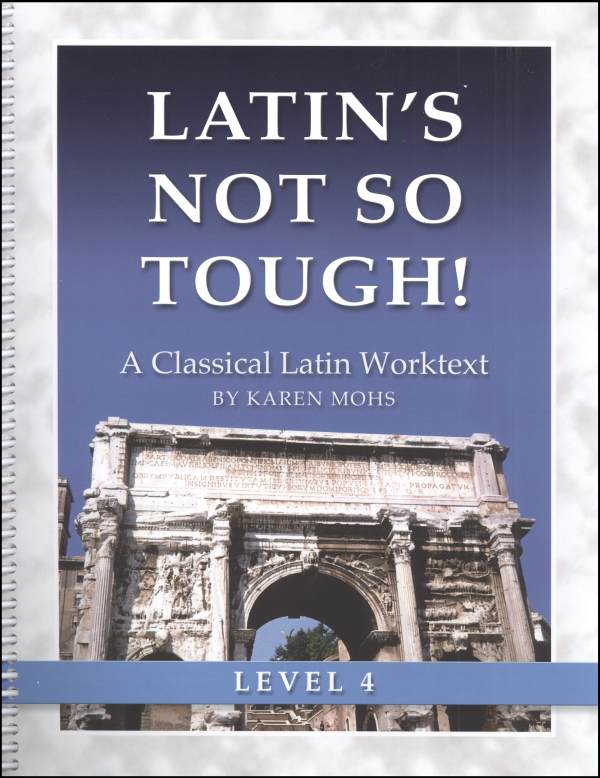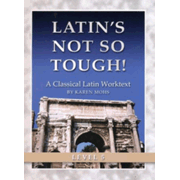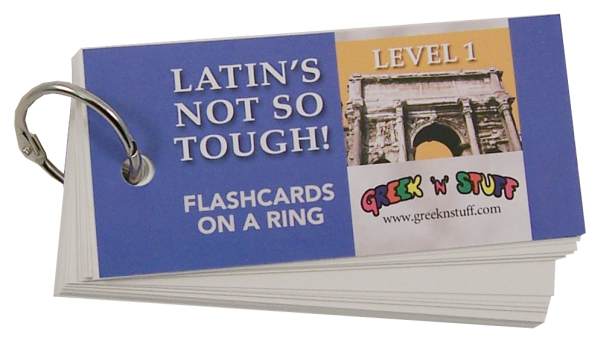This program introduces Latin in a slow progression that makes it suitable for even the early elementary grades. While you can use it for older students, you will need to work quickly through lower-level material so that you can get into the higher-level books that cover material more typical for high school.
Level One is entirely focused on pronunciation, including some of the peculiar diphthongs we find in Latin but not English. Very large print, instructions on letter formation, and workbook activities match the type of activities we find in typical English language workbooks for first and second grades. Sounds are all taught in the context of English vocabulary.
Level Two introduces a beginning Latin vocabulary. It quickly reviews pronunciation then introduces one Latin word per lesson. Students then circle matching words, fill in the blanks with word meanings, do matching exercises, and answer yes/no questions (think of these as true/false questions). While verbs are taught only in the first person singular forms (e.g., I love), all other words are presented in isolation rather than in sentences. Vocabulary is continually reviewed through subsequent lessons. Vocabulary is similar to that taught in traditional courses, teaching the Latin for words such as girl, boy, earth, poet, forest, island, horse, sword, gate, love, prepare, carry, and seize. Older students could easily begin with Level Two as long as they spend enough time on the pronunciation lessons at the beginning.
Level Three begins with an even briefer pronunciation review then reviews the vocabulary words taught in Level Two. On page 27 it begins work on sentences. Accusative case words are presented with a note that endings change depending upon the use in sentences, but the complete explanation is withheld. This book avoids grammatical vocabulary, either for English (e.g., object of the verb, possessive case) or Latin. For example, when it presents the genitive case, it says, "The new ending is ae. It replaces the a at the end of words like puella to show that the farmhouse belongs to the girl." Level Three teaches first conjugation verbs and first and second declension nouns in this fashion. Paradigm charts for these are at the back of the book.
Level Four reviews vocabulary and grammar then moves on to cover five declensions and four verb conjugations. Explanations of grammatical constructions and usage are much more frequent than in earlier books. Also, students learn to read and write Latin sentences at this level.
Level Five teaches adjectives, adverbs, and prepositions along with more vocabulary and simple translation exercises from the Latin Vulgate version of the Bible. Completion of Level Five should put students at about the same place as students who have completed two years of high school level Latin.
Each student book includes flashcard pages that are essential to the program. These are printed on only one side of each page in the book, and the instructions say to cut out both "sides" of each flashcard then mount them on 3" x 5" cards. Alternatively, there are pre-printed flashcards to buy that come pre-punched with a hole so that they can be kept together on a ring. The flashcards cover what is taught within each book, so flashcard sets grow in size for each level.
Answer keys are either complete copies of the student book with answers overprinted or the abbreviated answers-only format. If you are drilling through the flashcards with your student and overseeing their lessons, you probably will not need the answer keys for the first two levels. Because of the significantly greater amount of written work in Levels Three and higher, you probably will want to purchase keys for those levels.
Audio pronunciation assistance is also available on CDs—one CD covers the first three levels and another CD covers the last two levels.





